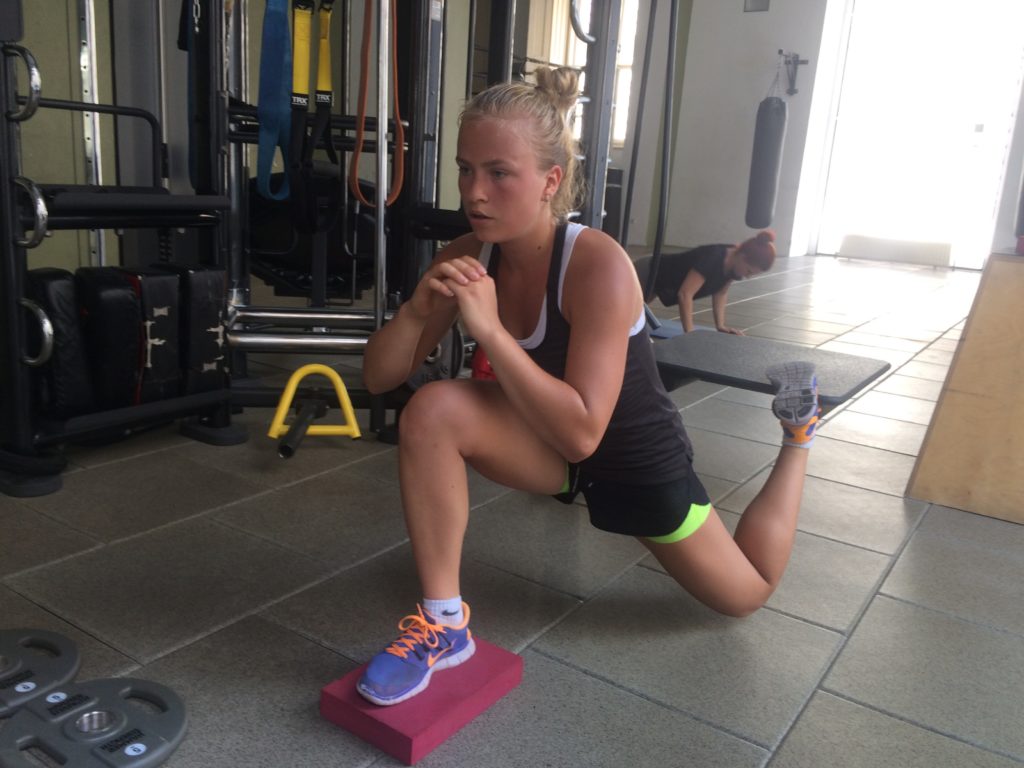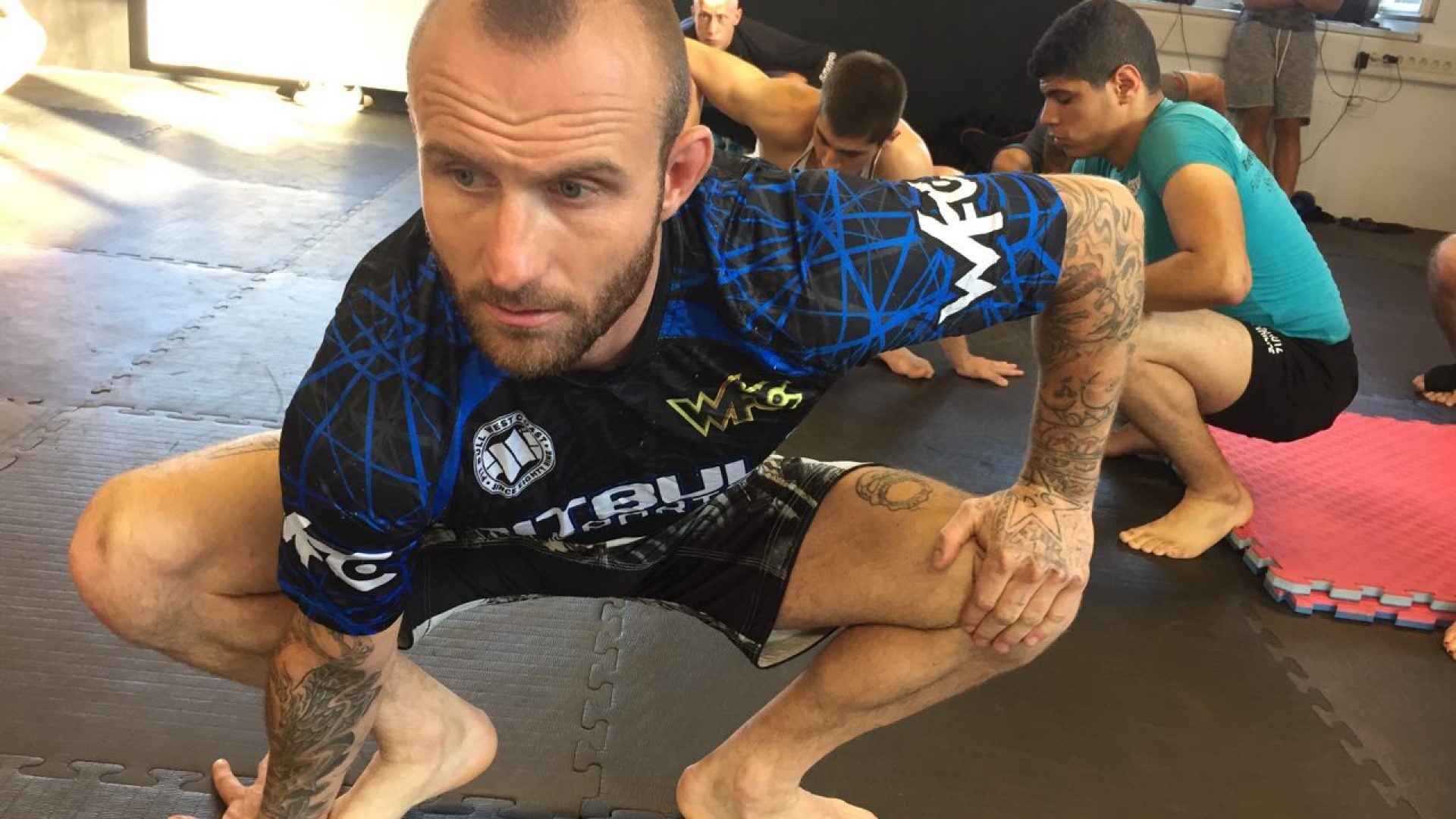There are countless training plans, strategies, methods and ways on the subject of strength and stability to achieve physical success. The first question is, of course, what success do you want to achieve? What is your goal?
Of course, classical strength training also improves the quickness, at least this is true for beginners, later not anymore. If you reach a plateau after 3-5 intensive and intelligently designed years of training, you need to drive specific or even individual strategies.
However, this post is much more about the absolute foundation, with a concept that I recommend for two types of athletes:
- Athletes with less than 3 qualitative years of training
- Athletes with more than 3, but not qualitative years of training.
You can see I am addressing a huge group of athletes. From my experience, over 80% of athletes should work with this fundamental approach.
It doesn't matter if you're a UFC fighter or a Bundesliga soccer player. Too many athletes try to get better too fast and don't give their body a chance to adapt.
Increasing too quickly readily leads to:
- Injury due to overload
- Injury due to misjudgement
- Injury due to incorrectly learned movement patterns
- Injury due to insufficient stability and coordinative ability
- Early overload or overtraining due to too much volume and quality at the beginning of a career.
In planning for strength and conditioning, people usually think along these lines:
"What exercises do I need to do and how often to make my athlete faster, stronger and more enduring?"
From my point of view, however, we as caregivers should think that way:
"What skills do I need to teach my athlete to maintain control in any situation, thereby determining the course of the competition and remaining as uninjured as possible?"
With this strategy, I create the basis and possibility for my athlete not to run along and be directed, but to set the tone and direct the opponent. This can of course be mental, but here it is about physical control, which of course also has an effect on the psyche.
This means:
If you are a master of your body, you will master any situation. This will take you physically and mentally to the next level.
The four level approach / 4 level concept of control:
I have created a concept that you can use to develop this ability and bring your body step by step to a strong and stable level.
Level 1: Body control
Level 2: Control external resistors
Level 3: Dynamic and specific control
Level 4: Situation control
Here in detail:
Level 1: Body control
Control, stabilize and master your own body!
- Create a solid foundation
- Be aware of how to correctly control and efficiently use individual joints, muscles and body parts.
- Understand how to combine individual muscles and movements into more complex exercises (what does the rotator cuff do during a punch or a takedown?).
- Learn different movement tempos from controlled slow to dynamic fast and when to use which ones
- Learn all the basic forms of movement that were naturally given to us: Pulling, pushing, holding, external and internal rotations, etc.
Why? How are you supposed to control your external weight or your opponent if you can't even control your own body?
Level 2: Control external resistors
Control and stabilize external resting weight!
It is important that you work with classic equipment from weight training, such as barbells, kettlebells, dumbbells, etc. You should learn the basic exercises such as lifting, bending, pushing and carrying in different variations. You should learn and master the basic exercises such as lifting, bending, pressing, pulling, carrying and pushing in different variations.
Why? How are you supposed to control external weight dynamically or that is in motion or your opponent if you can't even control a barbell at rest?
Level 3: Dynamic and specific control
Control your own body and external weight dynamically and explosively! Perform exercises in more difficult variations.
As you can imagine, we are moving more and more towards speed strength and specific requirements in your sport.
For example, use a barbell for Olympic lifts or a kettlebell or medicine ball for swings and throws. Accelerate or intercept equipment in a controlled manner. For example, a pulling exercise on the barbell.
But also use your body safely and with maximum efficiency, as in plyometric exercises or sprinting.
Why? How can you control your opponent or the situation if you can't even control a barbell or medicine ball with a specific requirement for your sport.
Why do so many injuries, such as pulled or torn muscles, happen to athletes who are not from athletics when sprinting and jumping?
- Poor technology
- Lack of knowledge about the individual functions of the body
- Excessive volume and, of course, errors in regeneration planning.
- But often lack of time investment in the physical basics!!!
Level 4: Situation control
Control the situation, the task in your job or your opponent!
Lastly, the control of external objects must be addressed, which also set actions and reactions themselves. For example, the opponent on the mat or the daily use in the job, such as a policeman or firefighter.
You can only guess the physical response of a sparring partner or opponent in competition, such as wrestling. With sporting experience and the increase of physical feeling, this ability improves.
You can't imitate this with a barbell, so you won't be spared time on the mat. But combined with a good foundation program, you will become a better athlete.
Conclusion:
Every athlete, whether in amateur or professional sports, should control his physical development according to this system. In this way, one can not only ensure a certain level of injury prevention, but also ensure a controlled build-up of performance and fully exploit one's own physical potential. Skipping steps because of impatience or excessive ambition only means that you will have to make up for them at a later date. Either forced by injury, or by the difficulty of overcoming performance plateaus. Faster is not always better and more is not always more.
But this also brings us back to the origin and each of us has to start at the same place. Yes, at the beginning. The difference is only the speed in which you develop personally as an individual. This does not mean skipping steps or tasks, but putting more effort into them.

Here at the end is another example from practice:
Wrestling, BJJ and MMA
→ Body control:
You should be stable and strong enough to avoid injuries and know how to use your body consciously. You should also know how your body reacts in diversion situations and train them, e.g. when you throw someone or are thrown.
A good trainer will work with you on your control of the opponent. For example, controlling limbs or consciously loading your weight on the opponent. This way you can rest and your opponent has to work and gets tired.
To do this, you need to know your body well and know how to use muscle and weight to experience the desired output.
→ Control external resistors
The use of additional weights is important because it shows you deficiencies that are classic in martial arts, among other things. For example, weak external rotation of the shoulders or the ability to work overhead.
What cannot be grasped with exercises of your own body weight will be further strengthened here. You will be prepared to work with external resistance, because that is what you are most confronted with in your sport.
You also need to know where your limits are. Regular strength testing not only helps you control your training, it also strengthens you physically and mentally.
→ Dynamic and specific control:
Olympic weightlifting Helps in dealing with external resistance, teaches the principle of alternating between tension and release and contributes enormously to the development, essential in wrestling, of quickness. I am a great friend of Olympic weightlifting, but from an injury prevention point of view, because it takes a lot of time in training and does not produce more output at peak performance, I recommend plyometric exercises and simple pulling exercises to normal strength training. With this you will achieve the same output. An MMA athlete has at most 2-3 sessions available for strength and conditioning. In wrestling and BJJ maybe a little more. Then the time for technically difficult exercises is unfortunately not enough.
If you are more interested here, I recommend reading the article "Olympic Lifts vs Pulling Exercises" by Pit Hausemer on my site.
→ Situation control:
On the mat, it is then important to combine the physical skills previously built up and the wrestling techniques learned with a special skill. The anticipation, the anticipation of the opponent's action. To anticipate or sense the opponent's action and to go into action yourself, thus controlling not only your own body, but also your opponent and the entire situation.
Thus, the correct, strategic structure of a strength training program can have a huge impact on your career as an athlete.
I wish you much success in your training plan and your career in sports!
Richard Staudner











